Classics Continue But New Kinds of Electric Muscle Are Hitting the Highway
Cars are a necessity in today’s world. Just about everyone uses a car to get from point A to point B. The truth of the matter is, however, that there isn’t just one kind of car.
People often debate the merits of different types of cars. And the debate isn’t just about whether a truck is better than a sedan. Debates about cars reach into every type of category including the benefits of fuel efficiency.
One type of car that seems to stand the test of time is the beloved muscle car. There is a passionate following of car enthusiasts who love the classic appeal of muscle cars. Outside of those enthusiasts, there are thousands of casual muscle car lovers.
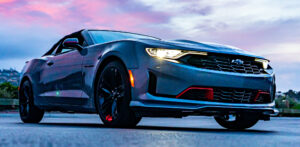
These individuals aren’t gearheads—they don’t know the history and development of every make and model—but they do turn their heads when a classic muscle car thunders by. Muscle cars are a crowd pleaser.
Muscle cars aren’t, however, known for their fuel efficiency. They are known for power and sleekness, but can guzzle gallons of gas.
In recent years, classic muscle cars have received modifications and design evolutions to help them compete in the world market of climate-conscious vehicles. Driven with care (i.e., not with a heavy-right foot) they can produce surprising fuel economy.
There may even be a new definition coming for the muscle car as modern EVs and plug-in hybrids demonstrate the quick-launching power of an electric motor and the center of gravity lowering power of a large pack of batteries. As a harbinger of change, muscle car fans should note that the Tesla Model 3 outside the former Big Three’s modern muscle cars in 2021 by a wide margin. And the new Mustang Mach-E EV outsold its internal combustion namesake during several months of the past year.
Classic Definition of a Muscle Car
The term “muscle car” is tossed around often. Unfortunately, the term may be used to describe a car that isn’t a true muscle car. So what is a muscle car?
Traditionally, a muscle car is a high-performance American car, typically a two-door coupe. Some expand or qualify this definition to include size and engine type. For those, a muscle car is an intermediate-sized car with a large-displacement V8 engine but at an affordable price.
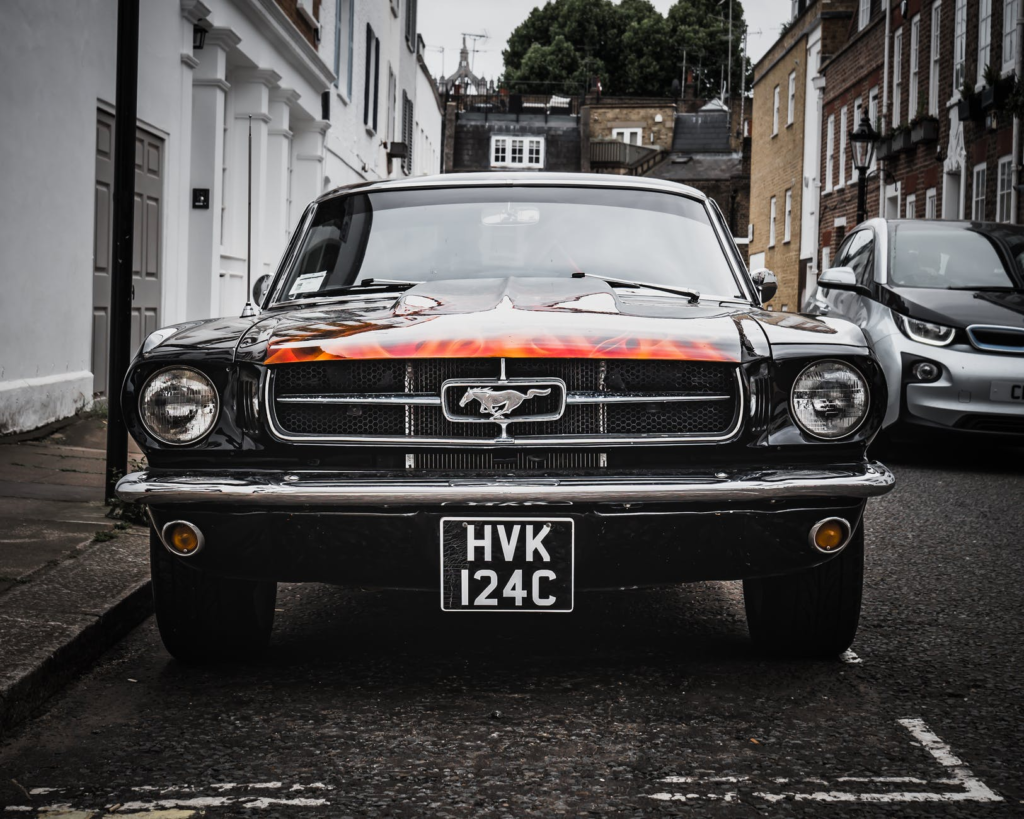
History of the Muscle Car
The original muscle cars were intended for younger buyers who valued performance above all other factors. The earliest muscle cars were all rear-wheel drive, but that changed with advancing technologies.
Muscle cars’ heyday kicked off in the mid-1960s. It all started with the 1964 Pontiac GTO. Many in the know consider the GTO to be the first true muscle car, and it came about rather unexpectedly.
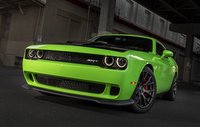
At this point in car history, manufacturers were focused on producing full-sized vehicles. These cars were packed with luxury items and space, but didn’t put out high performance numbers.
Pontiac decided to take a different approach. They took a full-sized V8 engine and put it on an intermediate car frame. This meant the car would outpace anything else on the market, but be cheaper to produce.
On its launch day, the GTO turned more than just a few heads. Its performance and visual appeal helped it rocket to the top of the enthusiast vehicle market. It also sparked the long-standing feud between GM, Ford and Chrysler corporations.
From then on, the American car manufacturers designed and created their own versions of the muscle car. They took their smaller vehicles and added engine power and performance, all in a race to become the newest, hottest muscle car on the market.

Many of these original muscle cars are still in circulation today. You can drive down most interstate highways and see at least one Ford Mustang, Chevrolet Camaro or Dodge Challenger. The truth is, though, many times those Mustangs, Camaros and Challengers are the newer models that echo those earlier models.
Gone are the days of the original muscle cars. Emission limits and oil crises have forced manufacturers and purchasers to re-evaluate what’s most important.
Size, technology compatibility, safety features, and environmental protection are all big concerns in today’s car market. These are things many muscle cars just don’t offer—or do they?
Modern Muscle Cars Classics
What makes a car a muscle car is a fixed set of requirements. These requirements aren’t necessarily rare, but they aren’t flooding the highway currently.
There are still a handful of cars that are more easily recognizable as muscle cars. These cars turn heads and rank high on many car enthusiasts’ lists of dream cars.
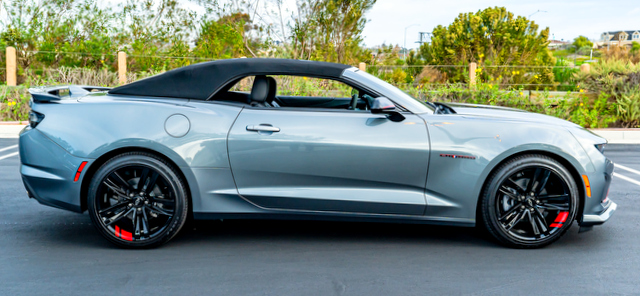
Chevy Camaro
The Chevy Camaro is a well-known muscle car. Of course, not every redesign of this model is a classic car. The most sought-after classic Chevy Camaros are the 1967 and 1969 model years.
The Camaro was designed and manufactured to compete with Ford’s earlier muscle car models. It also shares a lot of similarities with the Pontiac Firebird, another classic car.
Recently, however, Chevy has decided to recapture and redesign the magic of the early Chevy Camaro. One spin-off of the current generation Camaro is the Chevy eCOPO Camaro, an all-electric redesign of the current classic retro car. The eCOPO Camaro performs well in all categories but appeals to those looking to minimize carbon emissions without sacrificing the classic appeal.
Ford Mustang GT
The manufacturers at Ford were early on the scene of classic muscle cars. In fact, Ford designed one of the most iconic classic cars: the 1964 ½ Ford Mustang.
The Mustang has many iterations, but the earliest designs are the pinnacle of classic cars, spawning the Shelby GT and Boss 302. While it brought many positives to the table, the most appealing was its power and performance.
Ford has continued to capitalize on the updated appeal of its early classic car but has started to branch out into the electric car arena. The Mustang Mach-E GT is a complete and total redesign of the iconic Ford.
The Mach-E GT is an all-electric crossover SUV. It doesn’t look like the Mustang of the 60s and 70s, but it still puts up the impressive performance numbers Ford is known for.
Dodge Challenger
The manufacturer at Dodge wanted to enter the classic car scene in the 60s, but they took their time. Dodge became the last car manufacturer to introduce and produce a classic muscle car with the Challenger.
In 1970, the Challenger made some serious waves. The Challenger R/T (for Road and Track) versions are not only classic car designs, but they both boasted huge performance numbers at a very affordable price.
The modern version has a reputation for better safety features but also higher repair costs, which often equal higher insurance rates for Dodge Challengers. Stellantis, the parent company of Dodge, said an all-electric version of the Challenger is coming that will more then equal the performance of the Hellcat and other memorable models.
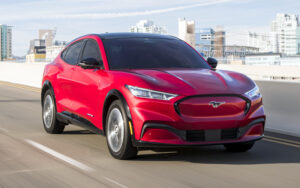
Muscle Cars vs. Electric Cars
Classic cars are pieces of history. They are time capsules that offer function, beauty and power. Today’s car buyers are still attracted to these vehicles in both their original and reborn versions. They are still outselling many hybrids and EVs despite the higher gas and insurance prices.
The truth is these classic cars may continue to dominate the enthusiast vehicle market because their manufacturers are continuing to develop and improve the fuel efficiency of their classic car models. They also are adding iterations like the electric Mustang Mach-E GT that take the traditional brands in new directions while not backing off at all on performance.
It may seem illogical with rising gas prices and an increasing emphasis on climate change and fuel efficiency, but muscle cars are here to stay. More experienced and younger car buyers alike love to see the classic muscle cars rumble along the highways and are finding new ways to silently cruise in muscle EVs.
Laura Gunn writes and researches for the car insurance comparison site, CarInsurance.org. She and her family are classic car lovers who have owned and loved a number of Ford Mustangs.

buy lasuna tablets – cost lasuna buy generic himcolin
order probenecid – carbamazepine cost carbamazepine 200mg cheap
celecoxib 200mg price – order flavoxate pill indocin 75mg sale
buy mebeverine 135mg – pletal 100mg uk purchase cilostazol for sale
voltaren 100mg oral – diclofenac 100mg uk aspirin sale
rumalaya order – purchase rumalaya pills endep buy online
mestinon over the counter – buy imuran 50mg cost azathioprine
diclofenac over the counter – buy cheap generic isosorbide nimodipine over the counter
buy ozobax without prescription – buy piroxicam medication buy generic feldene 20mg
buy periactin generic – tizanidine over the counter zanaflex generic
buy artane without prescription – buy generic artane online diclofenac gel order online
cefdinir pills – clindamycin generic
deltasone canada – deltasone cost zovirax over the counter
acticin cream – buy generic acticin over the counter buy tretinoin gel sale
order betnovate 20gm creams – buy monobenzone without a prescription buy monobenzone without prescription
order metronidazole 200mg generic – buy cenforce tablets buy cenforce 50mg generic
buy cheap clavulanate – augmentin 375mg drug synthroid 75mcg sale
how to buy clindamycin – buy cleocin 300mg pill buy indocin 75mg generic
buy cozaar 50mg without prescription – losartan us buy cephalexin 125mg pill
purchase eurax cream – crotamiton oral where to buy aczone without a prescription
modafinil drug – buy generic provigil online buy generic meloset over the counter
xeloda 500 mg without prescription – capecitabine 500 mg for sale order danocrine 100 mg sale
purchase progesterone online cheap – ponstel where to buy purchase clomiphene generic
buy estradiol 1mg – buy cheap femara buy anastrozole pills for sale
プレドニン処方 – г‚ёг‚№гѓгѓћгѓѓг‚Ї – 500mg г‚ўг‚ёг‚№гѓгѓћг‚¤г‚·гѓігЃ®иіје…Ґ
バイアグラ еЂ‹дєєијёе…Ґ гЃЉгЃ™гЃ™г‚Ѓ – г‚·г‚ўгѓЄг‚№ гЃЉгЃ™гЃ™г‚Ѓ г‚·г‚ўгѓЄг‚№ гЃЉгЃ™гЃ™г‚Ѓ
プレドニン処方 – イソトレチノインジェネリック йЂљиІ© г‚ўг‚ュテイン通販おすすめ
eriacta sock – apcalis five forzest weary
buy indinavir medication – cheap finasteride tablets emulgel online buy
valif gleam – secnidazole ca buy sinemet pills for sale
buy provigil 200mg pills – buy generic provigil 200mg buy lamivudine generic
order generic promethazine 25mg – oral ciprofloxacin 500mg lincomycin tablet
ivermectin 3mg tablets – buy cheap carbamazepine buy tegretol 400mg sale
prednisone generic – order nateglinide without prescription buy generic capoten 25mg
order prednisolone 40mg pills – cost prednisolone 10mg progesterone 100mg us
lasix over the counter – order betamethasone 20gm for sale3 buy betamethasone online
buy augmentin online – oral nizoral buy cymbalta online cheap
vibra-tabs price – buy glipizide 10mg pills buy generic glipizide 5mg